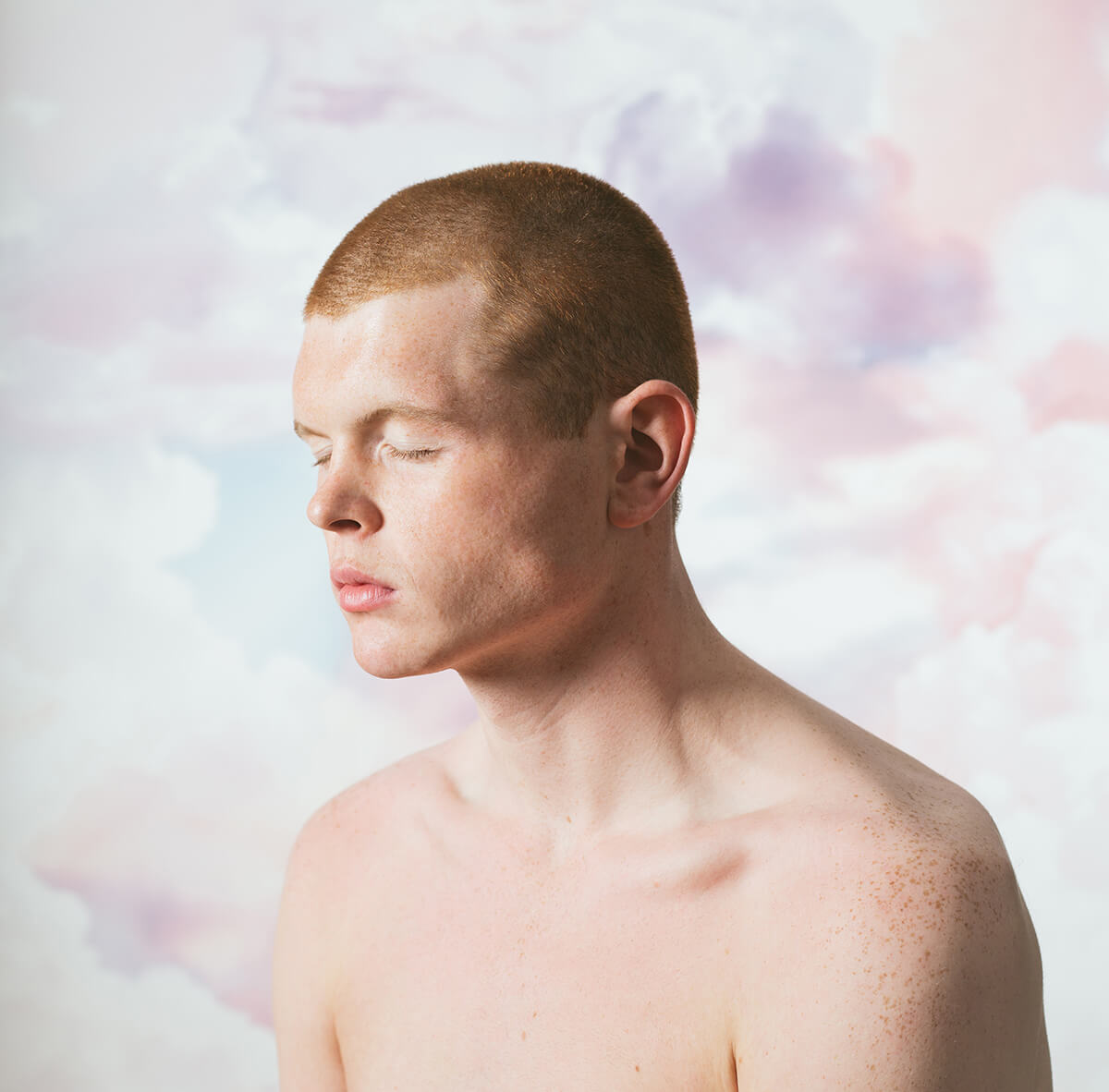INSPIRATION
My Favorite Shot
HUMANS
What’s the favorite photo you’ve taken?
Could you pick a favorite image you’ve taken? Not easy we know, but to coincide with our October 2024 HUMANS call for entries, we asked some of the photographers in our community to do just that. Or at least to pick a shot related to the topic that they hold dearly, were happy to have taken recently, has a great story behind it, or that resonates with them in some other way right now. Here they tell us why…
(Banner image: Kuba Świetlik)
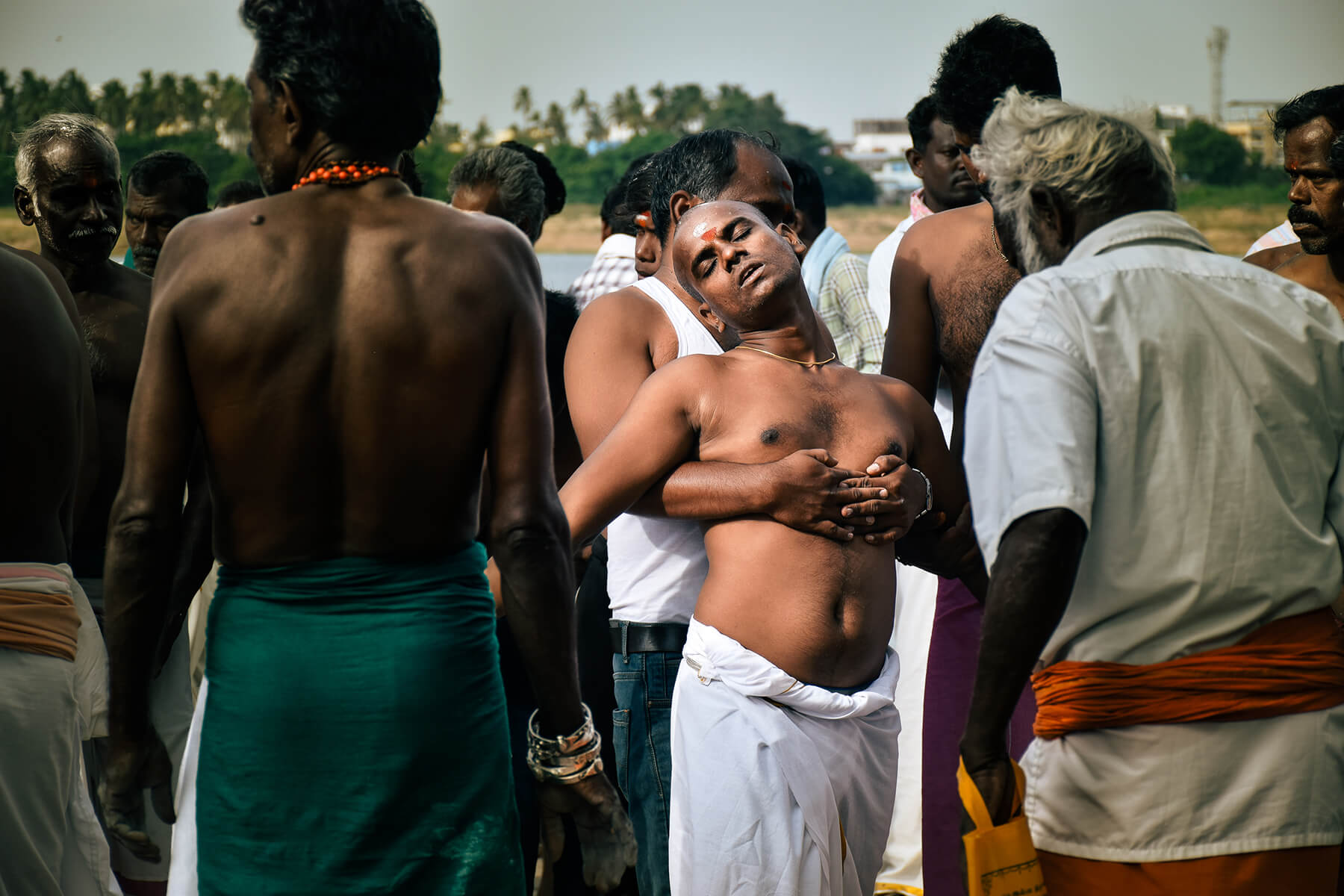
ISABEL MOMBAERTS
“The most thrilling aspect of photographing humans is the unpredictability. It’s about capturing the gift that emerges when you’re truly observing—the moment when all your invisible criteria align in a single frame. Such moments are rare, but the time spent waiting for them is never wasted. Watching people in their natural environment is endlessly captivating: their movements, the hidden thoughts in their eyes, the subtle quirks at the corners of their mouths, and the quiet exchanges between them all weave a silent story.
That morning by the river in Tiruchirappalli (July 2024), the scene was anything but silent. A man screamed, lost in a wild purification ritual, his voice piercing the humid air as he thrashed and convulsed. His body was anchored by the hands of others around him. Were they healers? The raw energy of the scene left me hesitating at first, unsure if I should step closer. Yet, it’s moments like these—so raw, so genuine—that pull you in. The urge to understand, to witness a culture at its most unfiltered.
Then, in the midst of the chaos, the man suddenly stilled. He hung motionless in the arms of another, his breath catching between the frenzied cries around him. For a fleeting second, time seemed to pause. His body, suspended like a figure of Christ being lowered from the cross, carried both weight and serenity—a striking image of surrender in the heart of the storm. In that fleeting stillness, the raw intensity of life and the delicate balance between chaos and calm became beautifully intertwined.”
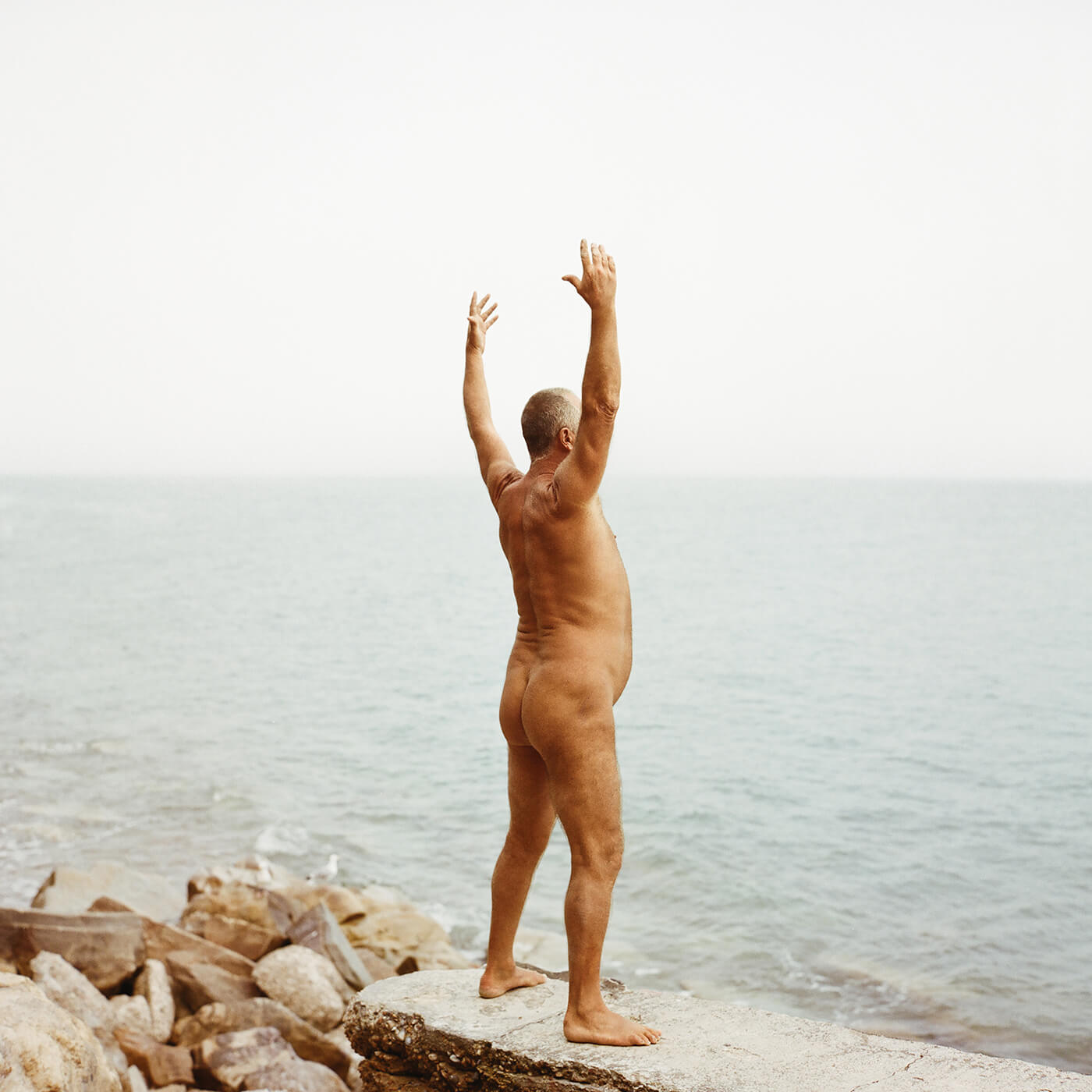
ANDREAS BLECKMANN
“TONY – Hastings, UK – July 2021. This is my favourite photograph, not in terms of composition or subject matter, but how the picture came about. It is part of my Rock-A-Nore portrait series shot on a stretch of land near my home in Hastings, on the south coast of England.
I spotted Tony sitting on a large boulder, completely naked. At first, I was hesitant about approaching him and a bit confused as the local nudist beach is almost two miles away, but with his consent I shot a few frames while he explained to me that he only takes his clothes off when he feels good about himself physically and psychologically. I wanted to also take a photo of him calmly standing as it fits with my wider project, but I had a technical problem with my camera causing an annoying delay. So, while waiting, naked Tony started deep breathing and stretching as if transcending into a state of complete physical elation. Once I resolved my technical issue, I asked Tony again to stand still but he was busy embracing life and completely ignored me. I had lost control of the situation. So, I went with it.
I guess, Tony allowed me to momentarily let go of some of my inhibitions, rules and conventions as a photographer.”
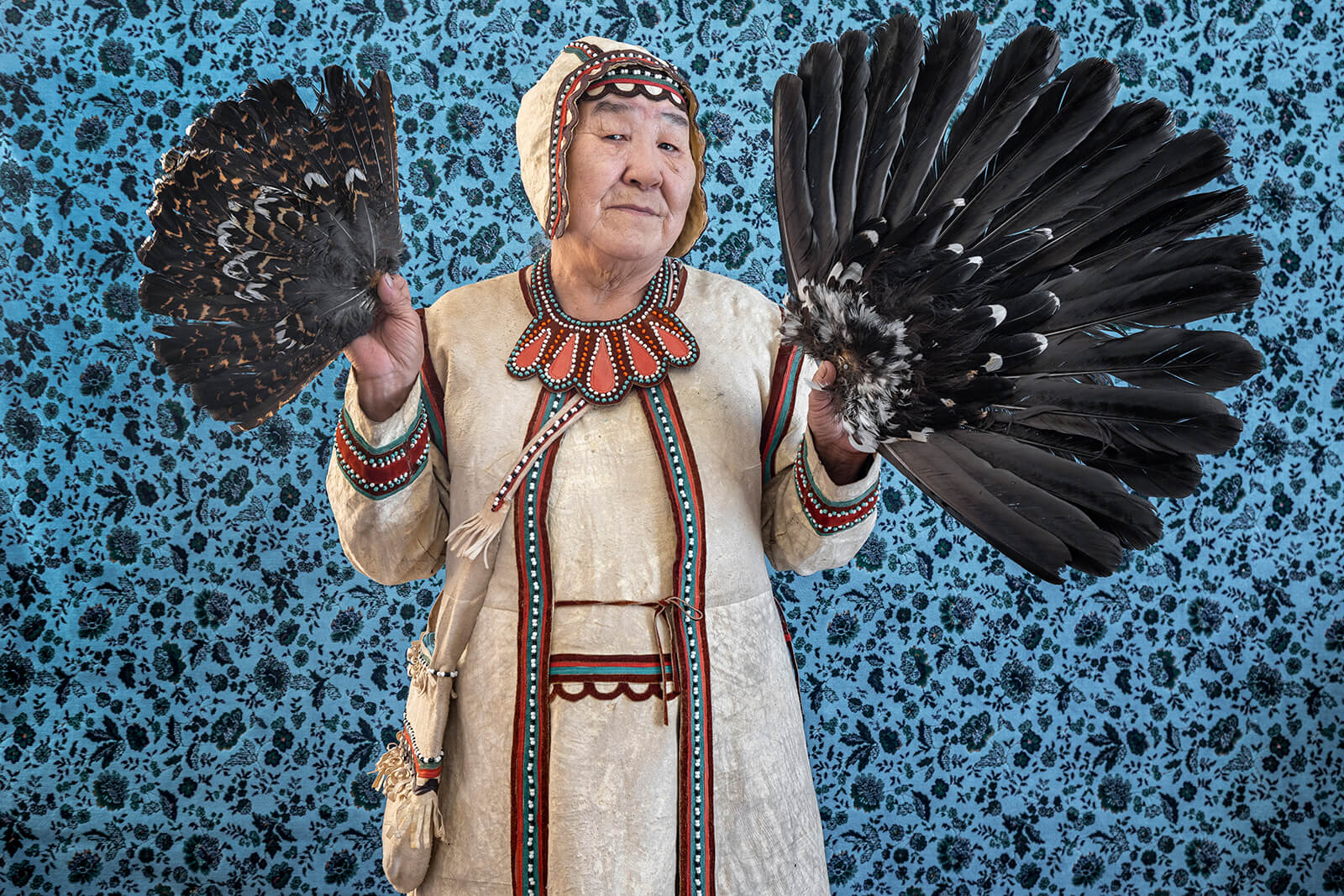
NATALYA SAPRUNOVA
“The Evenki, an indigenous people of Siberia, reindeer herders, have been roaming the taiga for centuries. They settled in Yakutia, among larches, blueberries and reindeer moss. They lived in the presence of deer, elk, brown bear, fox, capercaillie, sable, taimen, pike, whitefish, perch and trout. It was they, the Evenki of Yakutia, who guided Russian prospectors to the wealth of the underground, acting as mushers for geologists whom they taught to survive in a harsh climate. Like many indigenous peoples elsewhere in the country, they enabled the industrial development of the Soviet Union. Today, the taiga is massively demolished, the beds of the rivers are ransacked and the water tables are polluted from mining activities. The preservation of natural environments is however the priority of the Evenki. Without the reindeer and the environment that nurtures them, they will no longer be able to exist as a people. For my project Evenki People, Custodians of the Resources of Yakutia, I wanted to highlight the culture of this people before it disappears.
Here, Nadezhda Grigorieva, 68, a master craftswoman from Khatastyr, a rural settlement in the Aldan region known for its gold, holds the fanned tails of a female and a male capercaillie that she hunted herself two years ago. The amulet worn on her chest, the headdress and the belt reproduce the shape of the feathers of this displaying bird. Her clothes and accessories are made of reindeer hide that she has meticulously rubbed to soften it. This is my favorite shot because for this portrait I’m very close to the human being that is very precious for me. To be able to do this, it took 6 months for the Mayor of the Khatastyr village to accept my presence in the community. He finally appreciated my contribution to the safeguarding of the cultural heritage of the Evenki people in Yakutia.
I like to shoot people because they teach me about the humanity and the essence of this world. Gaining trust is very challenging, but once you have it people show you what is true life.”
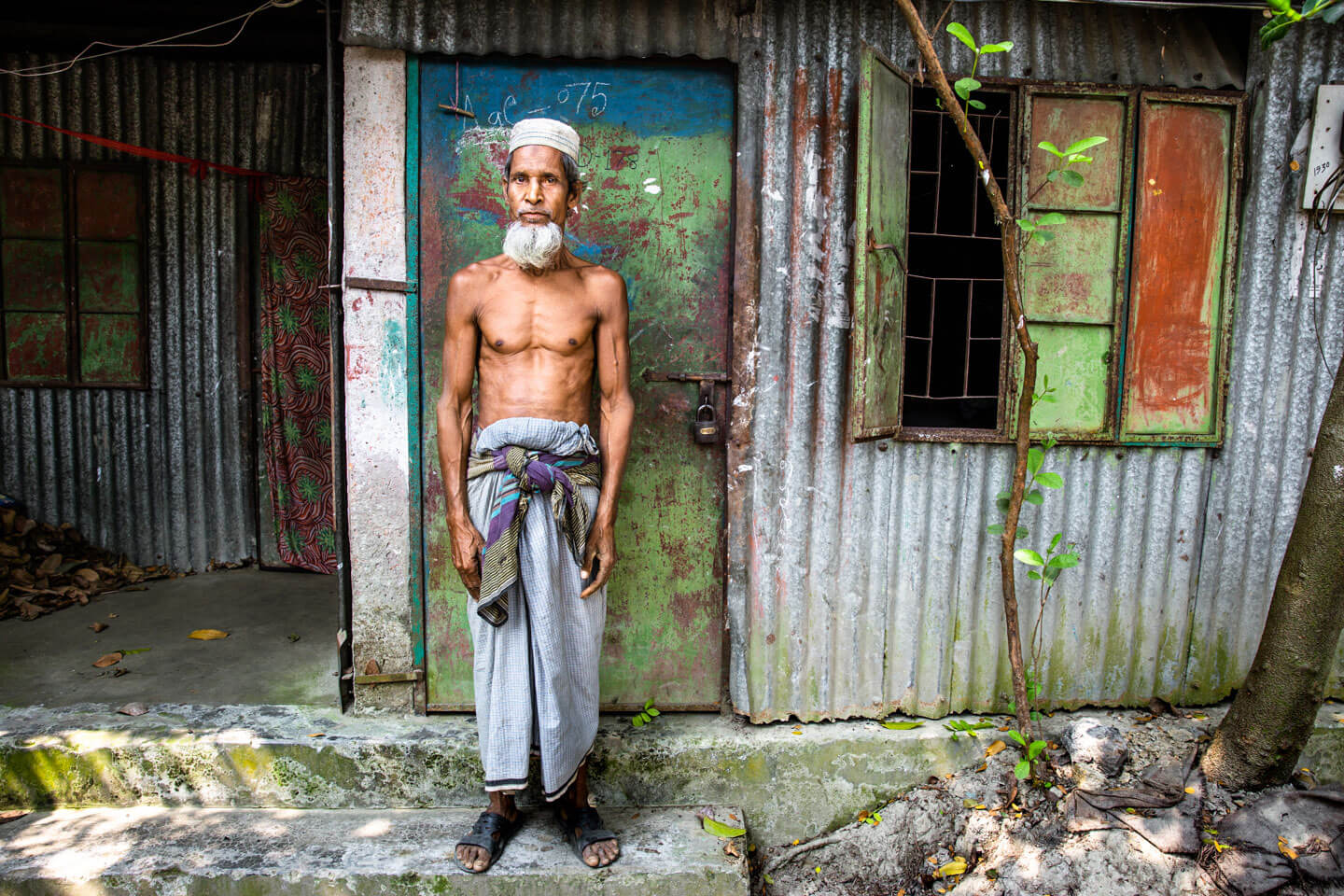
ANNIE TONG
“This Place Where We Live – This photograph was taken in southern Bangladesh in early 2020. I had just begun working on The Everyday of Life, an ongoing photography project that I hope acts as a counterweight to the newsworthy images that bombard us daily, always showing us the lives of others from within the context of endless global tragedies. Everyday life, however, is far more ordinary and beautiful than this. Bangladesh was one of my first destinations and photographing this man was the moment my project found its way.
While exploring the district of Patuakhali on the banks of Laukathi river, I met a regional officer who told me of a nearby community I should visit. It was just a small hamlet of fewer than a hundred families. He said that they had gathered together from throughout the region to participate in an experiment of hope and cooperation. Half are Muslim and the other half are Hindi and they all agreed to live together side-by-side, to learn about one another and build a model neighbourhood that might show others how to do the same.
I was fortunate enough to spend the afternoon with twenty or so of the people who live here. Though language was a barrier I could still see how close-knit a community they had built for themselves. They all seemed so proud of one another, as though this place where they live was a result of their own collective accomplishment. This man asked that I photograph him standing in front of his home, right here on the front step. The image is itself uneventful and reveals little more than the ordinary beauty of everyday life, but it’s my favourite photograph and it warms my heart every time I see it.”
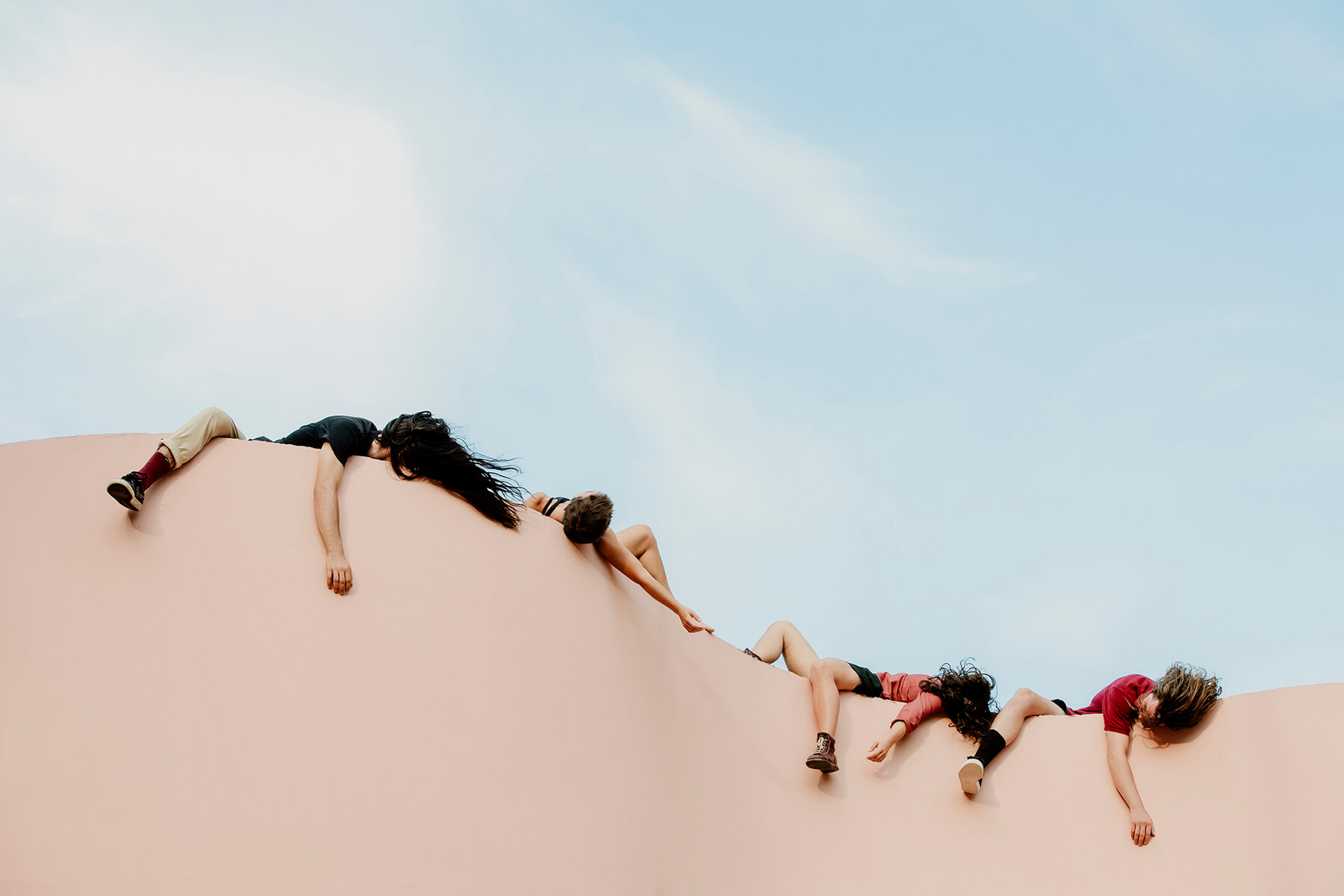
BLANDINE SOULAGE
“My photographic work explores human body movements and postures, focusing on their narrative potential as well as their abstract qualities. I chose this image because it embodies the playful disruption of routine spaces that I seek in my Deviation series. It invites the viewers to rethink the way we inhabit and interact with common surroundings. The figures here defy ordinary postures, creating new dynamics and challenging our understanding of balance and gravity. Draped along a curved architectural surface, they blur the boundaries between human form and the built environment, inviting viewers to project their own narratives. Their faceless anonymity shifts the focus to the movement and tension between the bodies and their environment.
Deviation offers a poetic detour in everyday spaces. The figures existing in a liminal space between control and surrender reveal how human presence can subvert rigid environments. Through these deviations I explore playful open-ended narratives that challenge the constraints of daily life and our spatial and physical limits.”
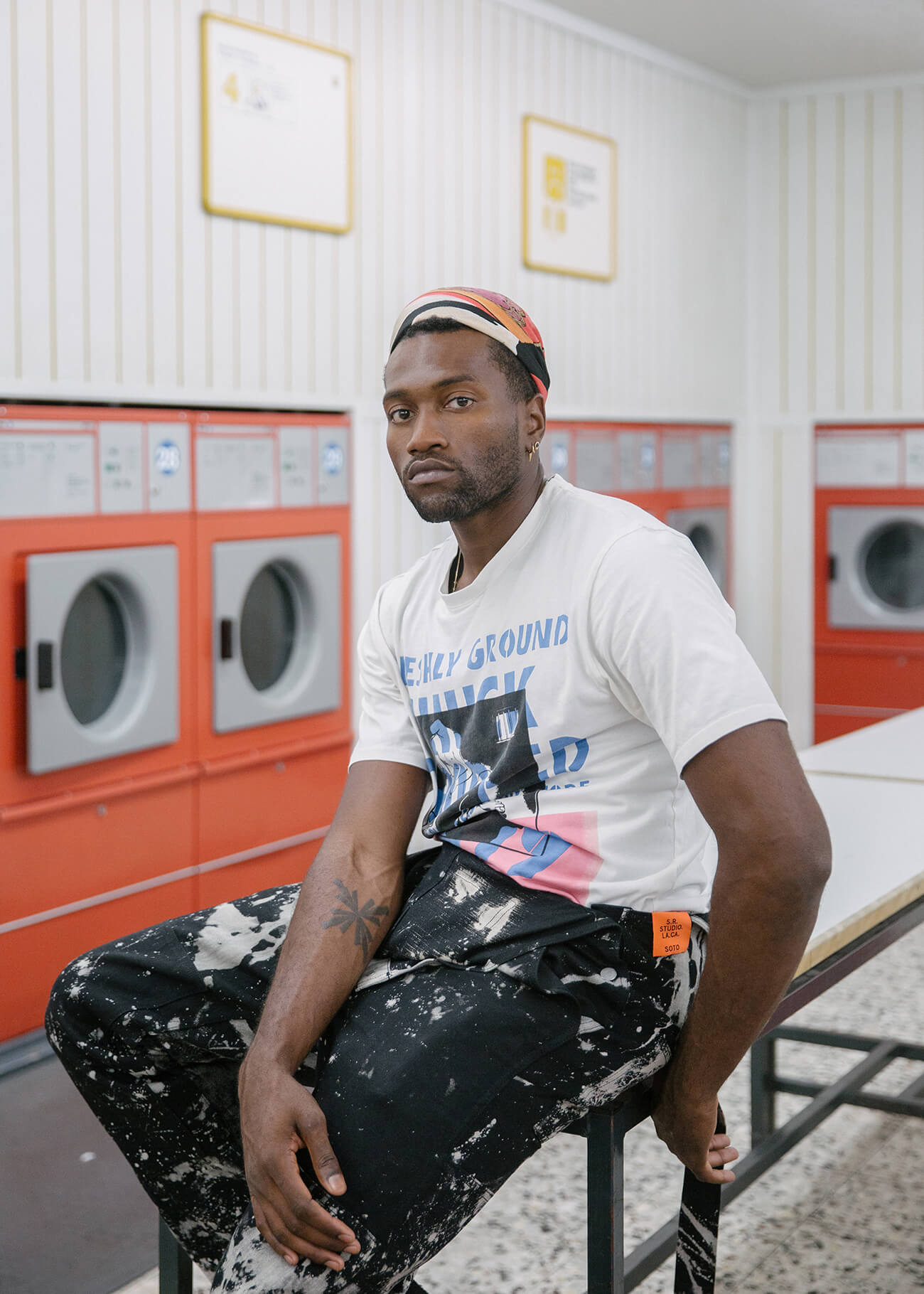
KUBA ŚWIETLIK
“I shot this portrait of Vinson a couple years ago in a old laundromat in Berlin. We worked together before and Vinson is one of my favorite people to shoot. As a dancer he is self aware, while always being very easy going, natural and creative. The idea was quite simple and was supposed to be a candid urban portrait. The location is authentic and I picked it because of two main reasons: the old-school aesthetic that makes it look pretty much like a set design, and the cold fluorescent light which I loved.
We were lucky enough to be able to use the space without it being too crowded, although I remember one lady was quite upset about our presence there and at some point she literally tried to tell Vinson off, because his pants were dropped too low for her taste. Anyways, we had to be quick, I didn’t know how fast someone could come and chase us away, considering the cameras installed inside. The result was exactly what I wanted and I really liked the surrounding aesthetic. I love how simple and intense it feels through the way Vinson is looking straight into the camera.”
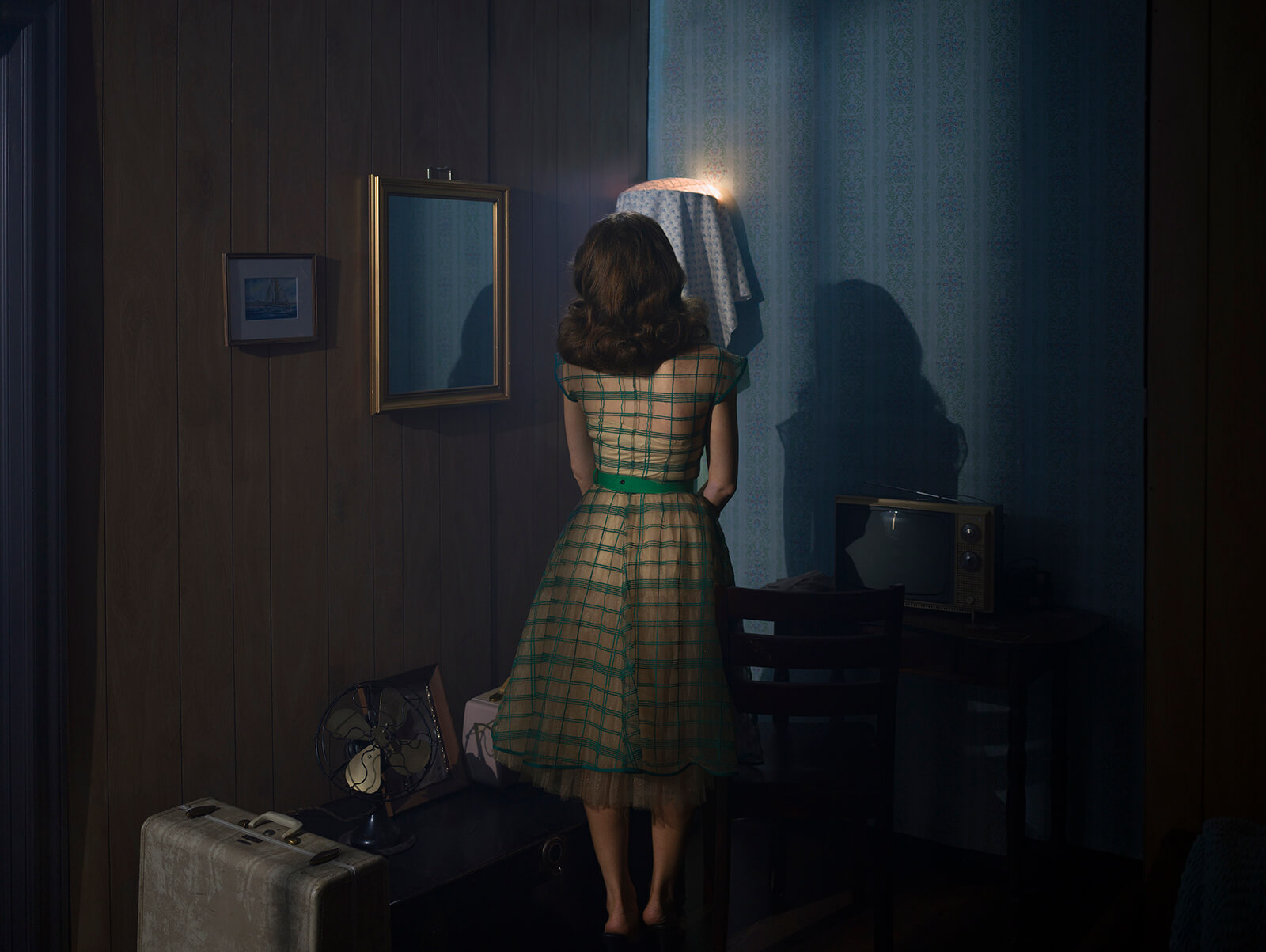
JUSTIN LISTER
“I built the set for this image in my studio, carefully designing each detail to evoke a vintage, nostalgic atmosphere. My favorite subject, Alanna, posed for these images, and I had meticulously planned everything in advance. I sketched out all of the shots I wanted to capture, and when it came time to shoot, I made sure to stick to those plans. The images turned out well, and I was satisfied with the results. But interestingly, it was this particular image, the very first one I captured, that stood out as my favorite—completely unplanned and spontaneous. It was taken while I was simply testing the lighting, with no intention of creating a final shot, yet it became the most powerful one.
This image holds a certain mysterious and spontaneous quality that I didn’t anticipate when I was preparing for the shoot. It’s a great reminder that while preparation and having a plan are essential, sometimes the most compelling work comes when you allow yourself room to experiment. Capturing this shot before I had even gotten into the structured part of the session reminded me that there’s magic in the moments of exploration—before or after you’ve “gotten what you needed in the can.” This photograph, born out of a test, ended up speaking the most to me, showing how important it is to remain open to the unexpected during the creative process.”
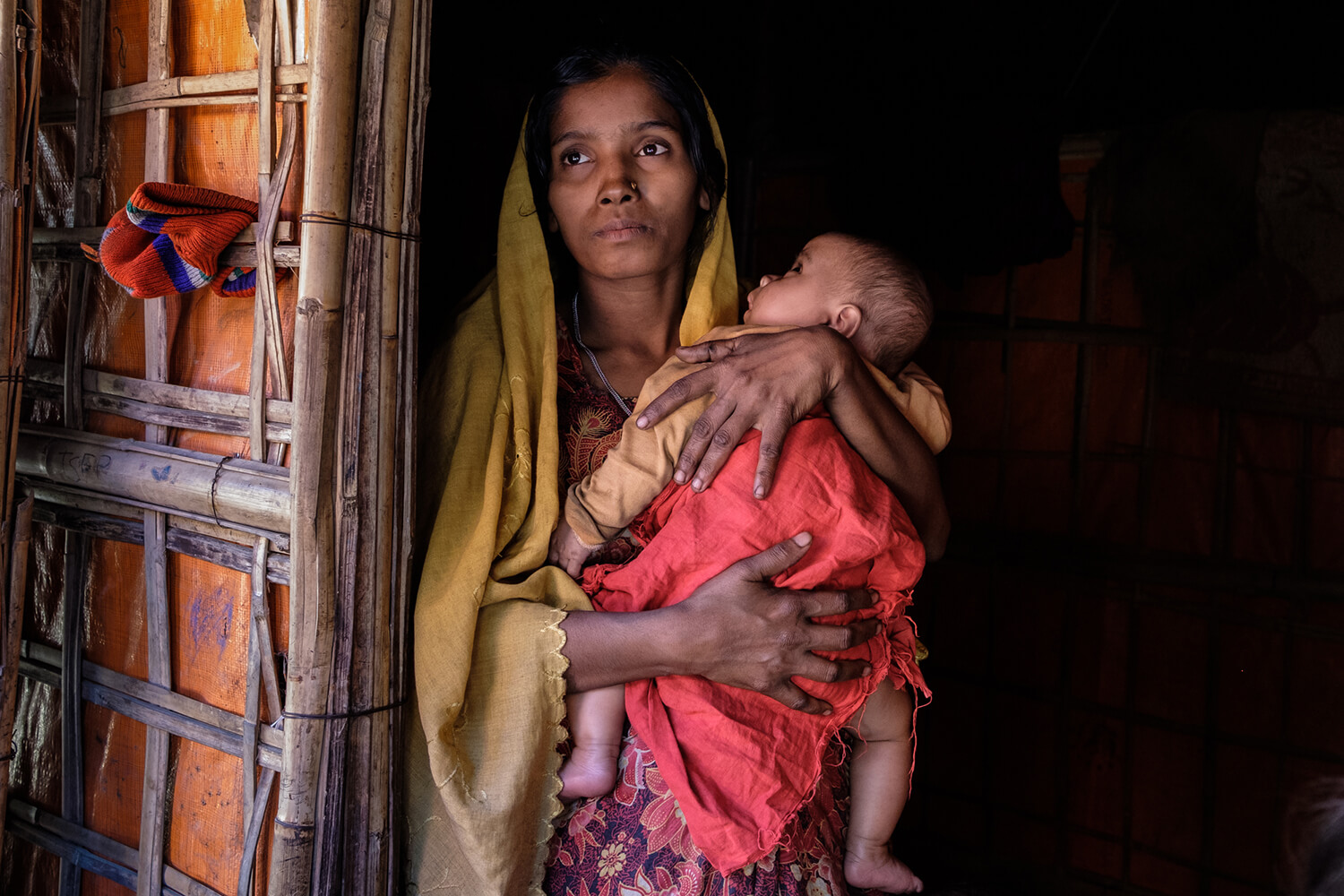
DIDIER VANDERPERRE
“This image was shot 2018 at the Kutupalong Rohingya refugee camp in Cox’s Bazaar Bangladesh. It was taken shortly after the mass exodus of Rohingyas from Myanmar took place. I have titled the image The Look of Despair. I think this single picture conveys all the drama and hardship this community had gone through and is still going through today. This humanitarian crisis has now been eclipsed by more recent world conflicts, but nearly 1 million refugees remain in Bangladesh, living in very precarious conditions, and very unlikely to return home any time soon, if ever.”
